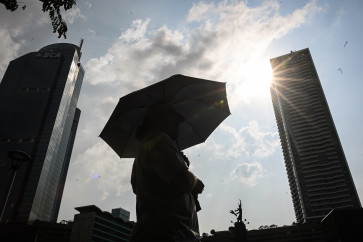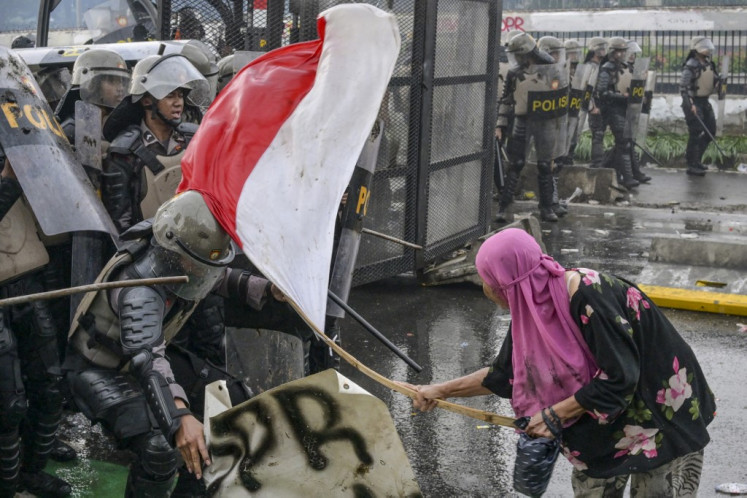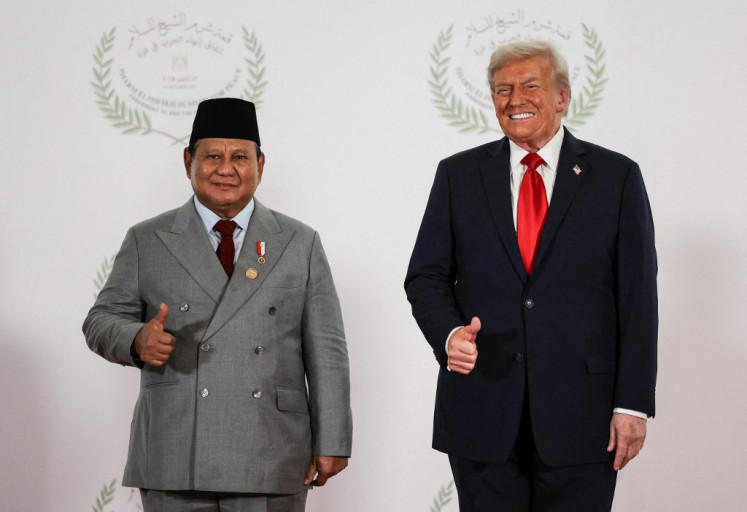Popular Reads
Top Results
Can't find what you're looking for?
View all search resultsPopular Reads
Top Results
Can't find what you're looking for?
View all search resultsPerennial problems await Pramono
Jakarta’s new leaders must acknowledge the urgent need to make the city more livable. This requires balancing infrastructure and social development, economic growth and environmental protection.
Change text size
Gift Premium Articles
to Anyone
J
akarta Governor Pramono Anung and his deputy Rano Karno are beginning their five-year tenure working for the city, which remains plagued by long-standing problems from traffic congestion to flooding.
Jakarta certainly saw improvements under Pramono’s predecessors, but the car-centric city is still notorious for its monster traffic jams, particularly during rush hours.
A report by Dutch location technology company TomTom ranked Jakarta the 90th-most-congested city in the world last year. In contrast, it was the fourth-most-congested city in the world in 2017.
Although roadway congestion levels have improved, our overburdened public transportation networks, some of which are already showing their age, present further problems for the city.
Compared to other major cities of the world, Jakarta is lagging behind in reliable and integrated public transportation.
Jam-packed Transjakarta buses are an everyday scene, and the integration between the bus rapid transit (BRT) system and the Jakarta MRT and LRT leave much to be desired. The same is true for the state-owned Commuter Line trains serving Greater Jakarta.
Flooding is another intractable problem of our nearly 500-year-old city. This was evident during the peak of the rainy season in January.
A number of neighborhoods and roads across the city and around Greater Jakarta were inundated during and after the Lunar New Year, hindering access to the capital during the long holiday and to Soekarno-Hatta International Airport, the main hub for air travel to and from Jakarta. Nearly 3,000 people took refuge at the time as a result of the flooding.
Jakarta’s new leaders must acknowledge the urgent need to make the city more livable. This requires balancing infrastructure and social development, economic growth and environmental protection.
Pramono has laid out his priority policies for his first 100 days in office, which include expanding the Transjakarta network and integrating it with public transit in Greater Jakarta, hosting a job fair every three months in each of the city’s 44 districts, keeping city parks open 24 hours a day and developing waste banks in each community unit (RW).
Improving the city’s flood response is so far absent from the list, but Pramono and Rano promised on the campaign trail to solve Jakarta’s flooding problem by building more reservoirs, opening up more green spaces and improving drainage systems, fixes that have long been overlooked.
Pramono has also said he will seek to integrate some of the campaign promises of his electoral opponents into the work of his administration.
Jakarta will lose its status as Indonesia’s capital city if and when the seat of government is moved to Nusantara in East Kalimantan. But the city will remain the country's economic epicenter within an expansive agglomeration urban region.
Home to over 11 million people, Jakarta is one of the largest metropoles in Southeast Asia and is the financial, cultural and political hub of the country.
Millions of people from Jakarta’s surrounding areas come to the city daily, mostly for work.
That’s why the new governor should know that developing Jakarta will require synergy between the city administration, the central government and the local administrations of Greater Jakarta.
Jakarta’s problems are also too big and too complex to solve without the support of different groups in the city, and Pramono’s reputation as the guy everybody likes could aid in this delicate task.
Pramono and Rano won the election last year thanks to a wave of support from the city’s native Betawi people and supporters of popular former governor Anies Baswedan. They also won the endorsements of Anies himself and former governor Basuki “Ahok” Tjahaja Purnama on the campaign trail.
We therefore hope that Pramono will be able to bridge the gap between the country’s political groups, including the central government.
We are now waiting for Pramono and Rano to prove themselves capable of solving Jakarta’s perennial problems.











